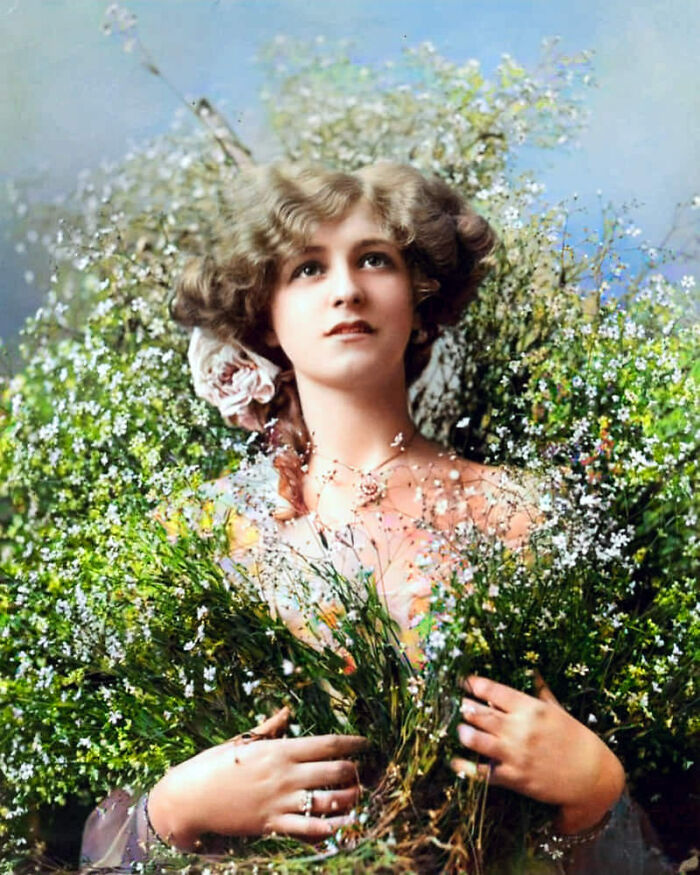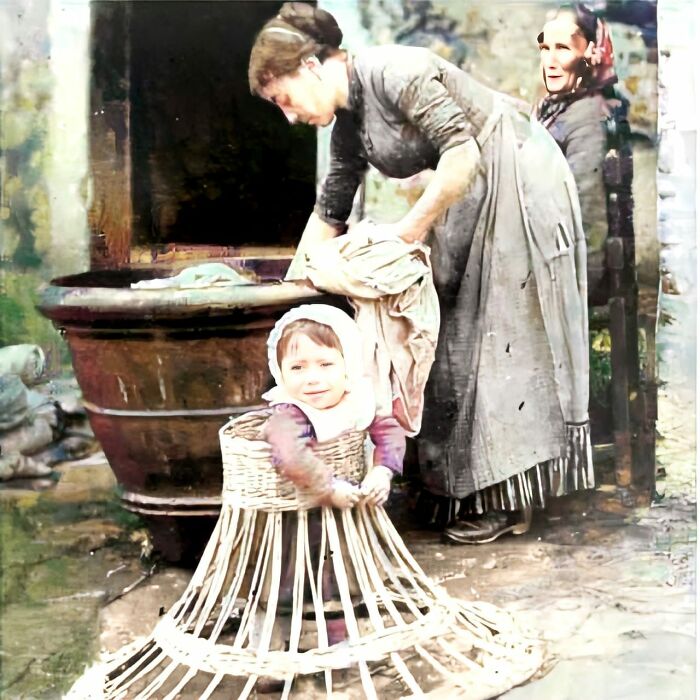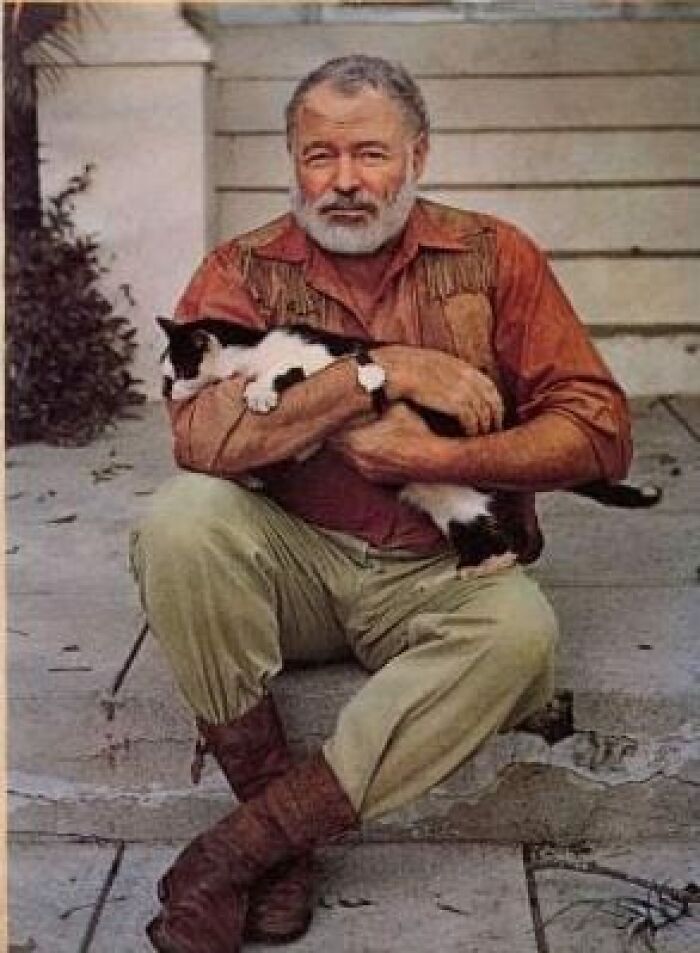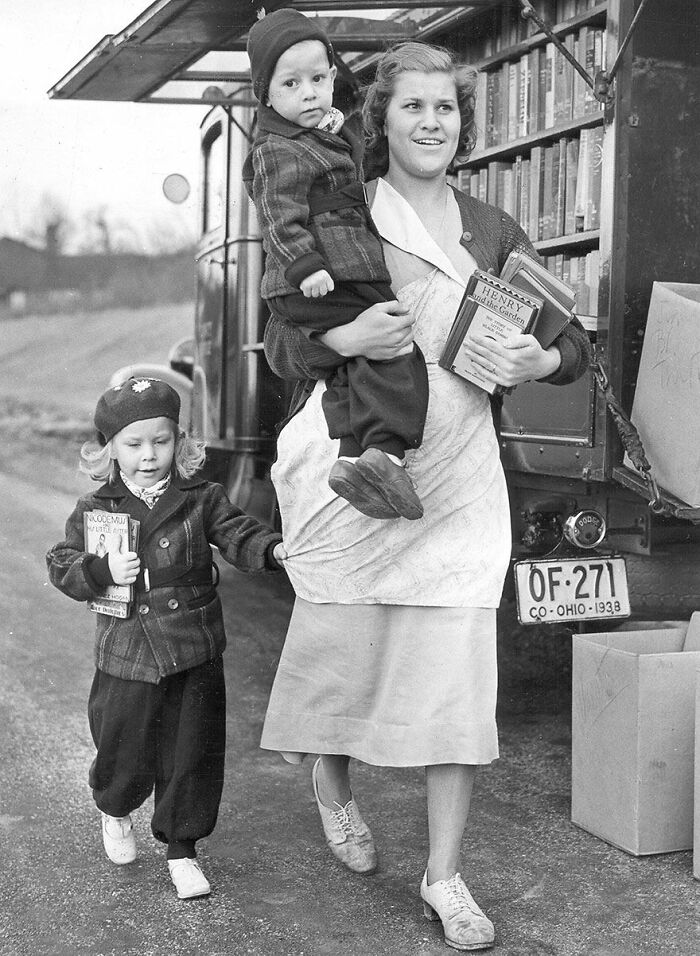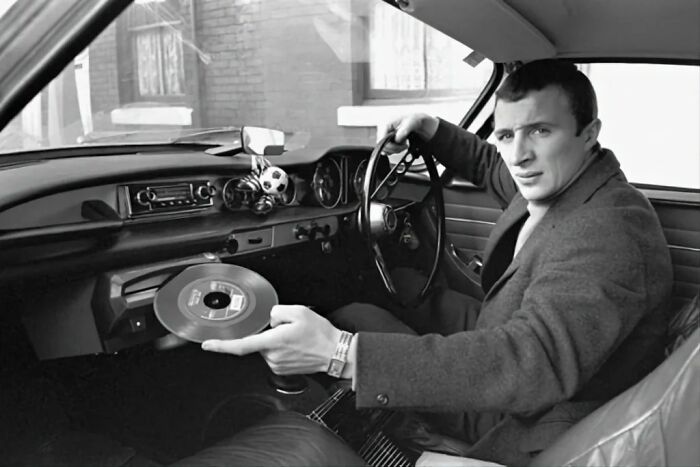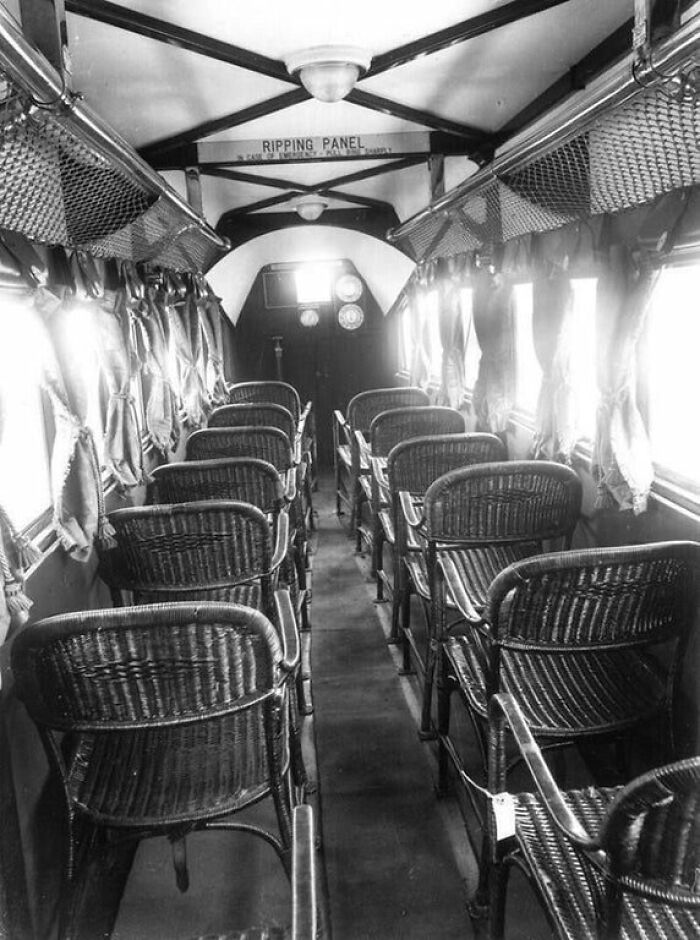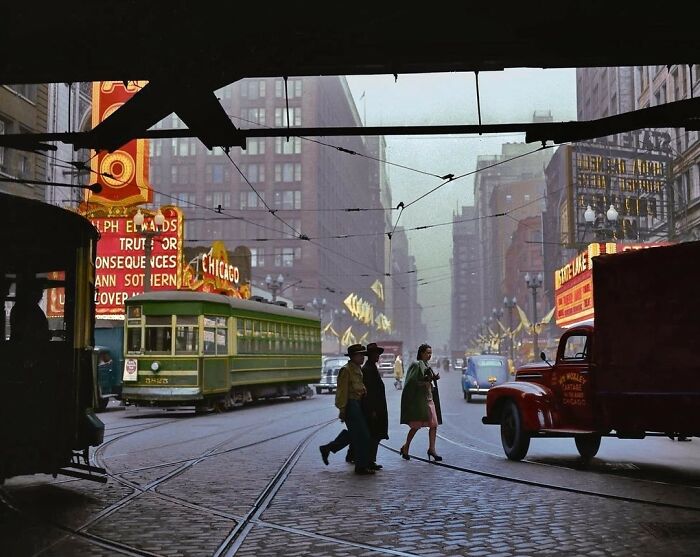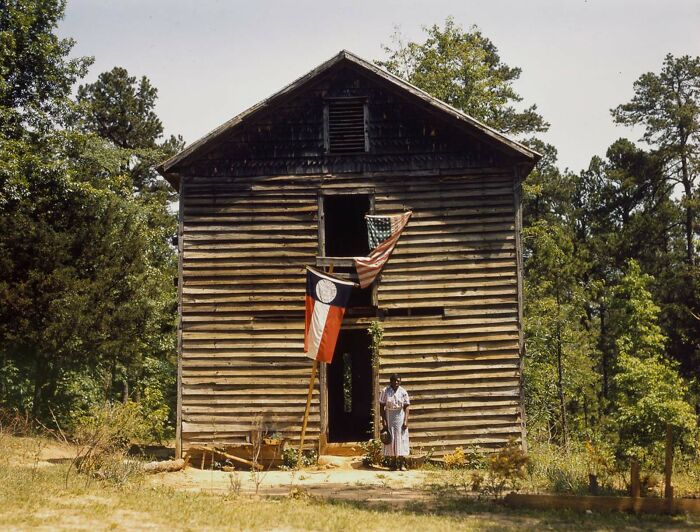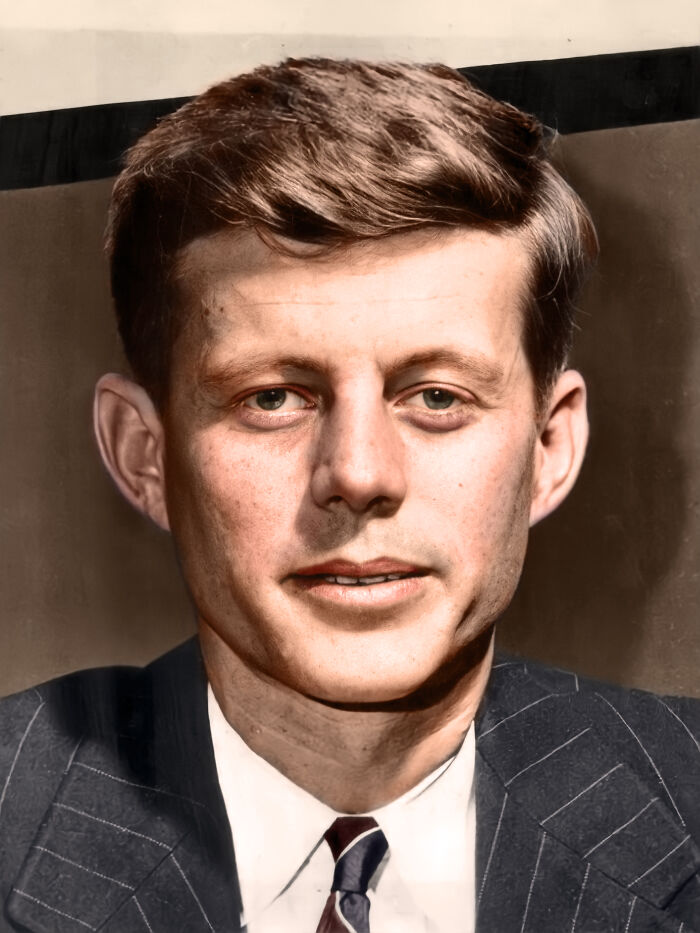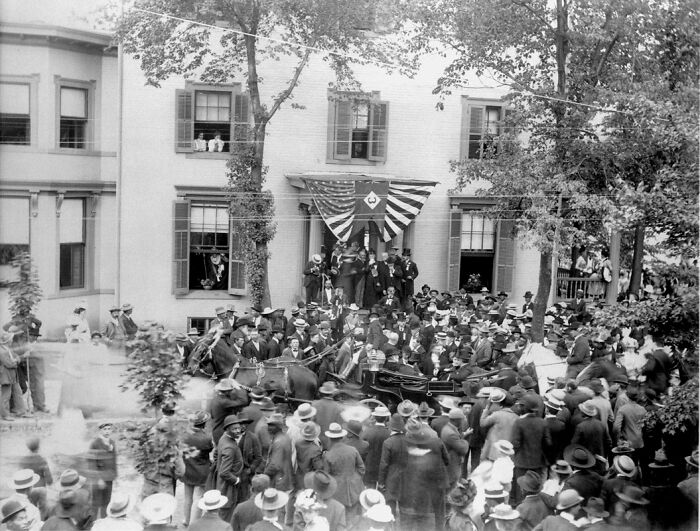
30 Fascinating People, Places, And Events Captured In These Rarely Seen Historical Photographs
History is often stereotypically presented as a dull subject (though many of you, alongside myself, may disagree vehemently). But what really brings those obscure dates and names to life are photos showing us what people like you and I might have looked like back then, and that’s exactly what the Historical Pictures and Old Memories group on Facebook does.
There’s so much to wonder about as we scroll through these photos. What were these people like? What were their daily joys and their daily challenges like? What might they think of the joys and challenges we face today? If we lived at the same time as they did, do you think you might have been friends?
One recent digital trend that we are lucky to enjoy for some of the photos on this list is digital colorization and restoration, but more on that in a bit.
This post may include affiliate links.
Nellie Brown, An African-American Cowgirl, C.1880s
One recent trend that has made historical photos more accessible and alive for some is digital recolorization. This is a fascinating field of photography that helps modern viewers truly imagine what things might have looked like decades or even centuries ago.
But digital recolorization is not as simple as it sounds, and it’s far from the first type of recolorization (or colorization, for that matter) that people have ever done.
A Native American, Belonging To The Ojibwe People, Spear Fishing In A Lake Somewhere In Minnesota, United States. Photograph Taken In 1908
Formal Portraits Rarely Featured Smiles, But They Can Be Found In Photographs Of Daily Life During This Period
The earliest type of widespread photo - the daguerreotype - was revolutionary in the world of visual arts. However, people were almost immediately disappointed that the process couldn’t capture color. The science of photography, still in its infancy, could not satisfy the public’s demand for color quickly enough.
A Young Kiowa (Kiawah) Woman In Native Dress
Anne Frank At School
I always want to cry when I hear her name.😢 A lovely little girl with her whole life ahead of her. Nazis are scum. 😡
While scientists, chemists and inventors puzzled over how to capture color, artists took matters into their own hands. And why not? If trained artists could create near-picture-perfect copies of still-life scenes, then coloring a black-and-white photograph couldn’t be that hard, right?
We’ll leave that judgment up to the reader, but we do know that attempts were already being made in 1839 - the year that the daguerreotype was invented. Artists’ experiments began by hand and involved powdered pigments, transparent paints, and all sorts of other colors applied directly to the photographs.
Charlie Chaplin Was Ahead Of His Time, 1922. This Is One Of The Earlier Distracted Boyfriend Situations On Film
Whirling Horse, A Sioux Native American Man. Photographed By Gertrude Käsebier, C.1900
A Man In Traditional Dress In Kestri, Greece, 1912
As color photography evolved through a number of iterations to the color film and digital sensors of the modern era, the concept of re-coloring black-and-white photos never disappeared. Though this was also often done by hand, the invention of Adobe Photoshop revolutionized the art of digital recolorization.
The current edition of Photoshop even has a tool called a Neural Filter, which can be used on a black and white photo to let Photoshop take its best guess at the required colors and colorize the photo itself. There might be some tasks, however, where this approach might not work.
Damascus Gate, One Of The Main Gates Of The Old City Of Jerusalem. Ottoman Empire, 1890
Bell Labs Experimental Video Phone 1960s
Bruce Lee Teaching His Son, Brandon, Martial Arts At An Early Age. 1960s
Both these guys died such unnecessary deaths. Brendon Lee was shot with a loaded prop gun during the filming of "The Crow", and dad had his sweat glands removed from his armpit so he wouldn't be seen sweating in his movies - he died a few weeks later from heat stroke.
Albert Einstein Posing For A Photograph In Zurich, Switzerland At The Age Of 24 In 1903
One fascinating aspect of some recolorization projects was the historical research involved in getting the colors right. A sufficiently scholarly approach could have photographers and artists recreating historic fabrics or processes to ensure that they could accurately reproduce the shine of a princess’ exotic silk or the vibrant colors of a coat of arms.
A Family Plays On A Unique Four Person Homemade Swing In Finland, 1954
Actress Miss Gabrielle Ray, Circa 1900
A Baby Learning How To Walk In A Wicker Frame As Mom Does Laundry. 1910s
Star Wars Cast Out Of Costumes: Harrison Ford (Han Solo), David Prowse (Darth Vader), Peter Mayhew (Chewbacca), Carrie Fisher (Princess Leia), Mark Hamill (Luke Skywalker) And Kenny Baker (R2-D2). 1977
Ernest Hemingway On The Steps Of His Cuban Estate Finca Vigia, Nuzzling One Of His Beloved Polydactyl Cats; San Francisco De Paula, Circa 1954
Scientists Studying Moon Phases On Models In Preparation For Us Manned Flight To Moon, 1962
The thought of achieving color photos by chemical means may seem archaic to younger users of modern DSLR cameras and smartphones, but the last great analog color photography processes (including Kodachrome and Agfacolor-Neu) involved complex chemical processes and special development processes in laboratory conditions.
Photography enthusiasts may regret the loss of these and other fascinating photographic processes, but look on the bright side - our grandchildren will get to see color photos and videos of us!
A Young Family In Martin Place, Sydney - Australia, (1950s)
4.5 Megabytes Of Data In 62,500 Punched Cards, 1955
Pity the person that drops the cards accidentally. I did that with a bunch of punch cards used to program a check capturing machine in banking IT back in the seventies - not fun.
1948 - Scottish Ballerina Moira Shearer Plays Dancer Victoria Page In The Classic Film 'The Red Shoes'
Fantastic movie. "Fun" fact: this movie is why Moira had to go into acting full time. The sets were on poured concrete as apposed to wood usually used on stages. When she danced on it in pointe shoes there was no give and it ruined her feet, ankles and hips so she had to quit ballet.
In The Victorian Era, The Woman’s Hair Was Considered An Important Part Of Her Appearance And It Marked Her Status And Her Femininity
Women in that era were often expected to grow their hair to great lengths, and it was common knowledge that a woman’s crowning glory was her hair.
I had hair down to just past my waist in HS. Took forever to dry, even with a blow dryer. Wore it in a pony tail most days and it would still be damp in the center after school. Cut 6 inches off Sr year. Much lighter. At 20, I cut it super short and donated it to Locks of Love . Long hair is difficult to care for that long
Participants In The Miss Beautiful Eyes Beauty Pageant, Paris, 1930
The Historical Pictures and Old Memories group on Facebook has nearly 20,000 members as of this writing and posts photos almost every day, so if you enjoyed this journey through the past, be sure to give them a follow!
A 1936 Drought Refugee From Polk, Missouri, Awaiting The Opening Of Orange Picking Season In Porterville, California
A Man Selling Brooms And Baskets. Japan, 1890-1896
A Group Of Breaker Boys At The Woodward Coal Mines In Kingston, Pennsylvania, Pose For A Photograph. Photograph Taken In C. 1900
My great grandfather, Jaybird, worked in the coal mines in West Virginia for years and years. He was diagnosed with Black Lung in the 1950s & told he wouldn't live another 3 to 5 years. He often told us stories about how bad it was. He passed away when I was 12 in 1977,more than 20 years later. It was a horrible life
Lisa Fonssagrives At The Eiffel Tower, 1939
Digging Graves As A Hobby (1916)
This was unfortunately probably a very useful hobby during that time (especially in Europe)...
Police Officer, Germany, 1925
Algeria Algeria 🇩🇿 1940_1960 Muslim Couple And European Couple Two Stories Civilization Religion But One Country
A Swedish Bride, C.1880
You know I'll just put my Bouquet on my head. It will free up my hands.
Japanese Mother And Child, 1866
A Happy Family Taking Home Their Book Haul From The Cincinnati Library Bookmobile In 1940
Assembling Sears & Roebuck Catalogs In 1942
Dog Child, A North West Mounted Police Scout, And His Wife, The Only Handsome Woman, Members Of The Blackfoot Nation, Gleichen, Alberta, Ca. 1890
A Well-Dressed Young Lady In The 1930s
A Newsstand On 23rd And 6th Avenue In New York City Photographed In C. 1903
I’m always amazed at how the past looks really like the present, apart from the style of the clothes.
1948 Tucker Torpedo Model 48 4-Door Sedan
Malcolm X (May 19, 1925 – February 21, 1965)
Children Playing In Paris 1938
Lunch In A Kindergarten On The Seashore. Sevastopol, May 1944. Evgeny Khaldey
Egyptian Men With A Fallen Statue Of Ramses II, The Late 1800s
1976 Photo From The Restaurant Windows On The World, Which Sat Atop New York City's World Trade Center's North Tower
One Of The First Photos Taken Of Tutankhamun's Tomb When It Was Opened After More Than 3,000 Years
Would be interesting to know what found in there and their uses … like the white oval ‘boxes’ for example.
Newly Married Couple On Their Wedding Day, Germany (1901)
As a German I can confirm this is exactly how we still get married. We exchange out formal handshake, we give the photographer a stern "are you done yet" look and then we go right back to work.
A Corvette Mako Shark II, 1965
A U.s Rural Mailman In 1914
A Car Teeters At The Top Of A Paternoster Parking Elevator As A Result Of A Broken Bolt In Denver, Colorado, 1970s
Men Stand In 45-Ton Steel Pipe Over The Hoover Dam, 1935
A 22-Year-Old Theodore Roosevelt Photographed During His College Years At Harvard. Taken In C. 1880
A Great Look At An Officer With His Indian Motorcycle In 1924, Washington D.c
Picture Circa 1900s Showing Knife Grinders Also Called Ventres Jaunes (Yellow Stomachs Referring To The Yellow Dust Released By The Grinding Wheel). Laying Down Was Done To Prevent Backs From Being Hunched All Day
The Uruguayan Flight 571 Was A Tragic Aviation Accident In 1972 Where The Plane Carrying 45 Passengers Crashed In The Andes Mountains And The Survivors Resorted To Cannibalism Before Being Rescued Two Months Later
Woman Drinking From A Communal Cup At A Pump, 1899
Bedouin Men Smokıng A Nargila (Waterpipe) At Their Desert Camp, Ca. 1900
Mrs. Handy With Vegetables She Has Just Canned. Scotland, Maryland In 1940
Concorde’s Cockpit. One Of The Most Complex Cockpits In History. Concorde Required A Minimum Flight Crew Of Three, With A Flight Engineer Working Alongside The Two Pilots
my late father in law was an engineer he was part of the development crew of Concorde...it was his favorite plane
Manchester City Player Mike Summerbee Demonstrating The Built- In Record Player Of His New Volvo P1800 (1967)
Actress Julie Adams Being Treated After Hitting Her Head During The Filming Of "Creature From The Black Lagoon", 1954
28-Year-Old Robert Leroy Parker, Better Known As Butch Cassidy, Photographed In 1894
A Ford Model T Descending A Hill In San Francisco, Circa 1921
"You can have any color you want- so long as it's black." Henry Ford
Automated Ordering At The Track Fast Food Restaurant. Los Angeles, California, USA. 1949
37th President Of The United States, Richard Nixon, And World Famous Singer, Elvis Presley, Meeting And Shaking Hands In The Oval Office In The White House In Washington, D.c. On 21 October 1970
The Interior Of Imperial Airlines Airplane - 1936
Bobby Fisher Champion Chess Player 50 Opponents
Spacelander: "The Bicycle Of The Future". The British Industrial Designer Benjamin Bowden Showing Off Spacelander In 1946
Arrival Of Immigrants, Ellis Island, New York City, 1920
Bandstand And Promenade. Newcastle, Co Down, Northern Ireland C1910
A Young Joseph Stalin In 1911
4c Phantom Of The Alabama Ang Over St. Louis, 1993
A Captured Russian T-28 Tank With A Finnish Crew Driving Through The Village Of Lappee, Finland On The 8 July 1941
Miniature Golf At Tailors Shop Bettmann
Burger Chef, C. 1970
I loved Burger Chef as a child. The one in our town was right by the KMart and the Farmer Jack's grocery, 2 others that now exist only in memory
A Street Scene In Chicago, Illinois, Photographed By Bill Strum In 1947
An Early 20th-Century Sail Wagon In Brooklyn, New York
A Prospector Pans For Gold In The Yukon River During The Klondike Gold Rush Of 1896. Dawson City, Yukon Territory, Canada
Tokyo Subway Pushers 1968: Stationmasters And Station Staff Push Passengers Into Train During Rush Hour At Shinjiku Station In Tokyo
Worker And Supervisor At A Car Factory, Moścow, Soviet Union, 1954
26th President Of The United States, Theodore Roosevelt, Who’s Term Spanned From 1901 When Mckinley Was Assassinated, To 1909
Awesome conservationist! Also one of the most underrated National Parks (North Dakota)
Times Square, New York City, 1958
Brutal Weather Atop New Hampshire’s Mount Washington, 1953. Photo By Peter Stackpole
A Sharecropper Near White Plains, Georgia. 1941
A French Soldier Giving A British Soldier A Shave In A Dugout In Boezinge, Belgium On 19 August 1917
30-Year-Old John F. Kennedy In 1947
A Group Of Friends Camping In Golden Gate Park, California Next To A Briscoe Sedan Car, 1920
Mike Tyson, Eddie Murphy And Charlie Murphy, 1991
Australia 1900: The Circumstances Of This Photo Are Lost To History. The Description Simply Says “A Woman Holding A Stuffed Rooster, Sydney, Approximately 1900”
Boston Common 1900
A Yarding Crew With A Donkey Engine Used For Yarding Or Gathering Logs Together After They Are Cut. Somewhere Deep In The Woods Of Washington - 1900
Great Big Sea has a song about "Donkey riding" I had to google it to figure out what it was about...and here's the picture.

 Dark Mode
Dark Mode 

 No fees, cancel anytime
No fees, cancel anytime 





















